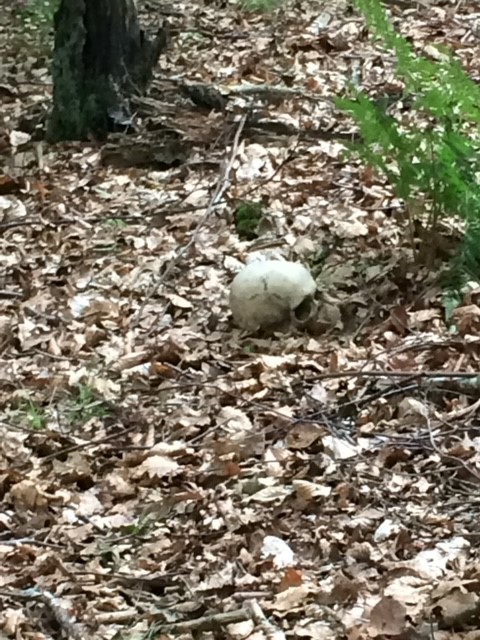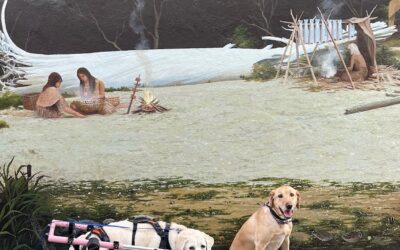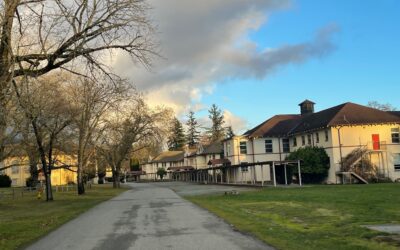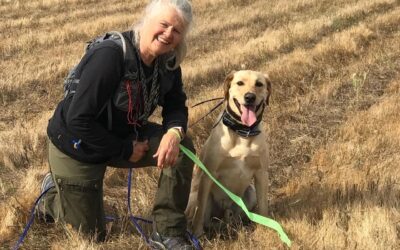One of the lesser known facts about the human remains detection (HRD) training we do with our dogs is that our K9 partners need exposure to full bodies in various stages of decomposition, preferably in a controlled environment with seasoned instructors that take us through the experience and make sure it is a positive event for both handlers and dogs. It goes without saying that we cannot generally provide that kind of opportunity within our small, local K9 SAR teams. In fact, in many states the acquisition of human remains is tightly regulated and it is a never-ending challenge to get needed training aids. And yes, we have to train on the real thing in order to be effective on missions. So, many of us spend our own money and time to travel to what is sometimes referred to as “body farms” like FACTS, the Forensic Anthropology Center at Texas State University. FACTS is a center dedicated to advance forensic anthropology and related sciences through education, research, service and outreach. It offers a program – in cooperation with FIRST Detection K9 – geared towards getting invited K9 search and rescue HRD teams exposure to full bodies. FACTS is the largest facility of its kind in the world with 26 acres at it’s disposal. The K9 program is successfully run by Ben Alexander who established it in 2013.
My first introduction to FACTS was in 2014 shortly after the program was started. It was my first trip to San Marcos, Texas and I woke up early the first morning of the workshop, committed to being on time at our first lecture. I arrived at the facility 45 minutes early with plenty of time to get my dog exercised and acklimatized and promptly ran into two Oregon handlers. We have subsequently become friends and colleagues as we run into each other at K9 SAR trainings all over the US: Karen Marcotte and Lori Blackburn. As we were making introductions, we took note of ominous-looking black clouds building up on the horizon. We became alarmed when our smart phones started sending alerts that a tornado was heading directly towards our location. Somewhat distressed we found a large shed used for farm equipment and took cover with our cars while listening to the howling wind. Momentarily formidable sheets of rain came pouring out of the sky. We narrowly avoided the tornado but, to our chagrin, discovered that the exit road was blocked due to flooding and the workshop location had been moved away from the ranch for the day. We ended up sitting in the very nice ranch caretaker’s living room watching weather and flooding updates on TV most of the day and ultimately, assured it was safe, were able to depart in a thrilling drive across a raging stream late in the afternoon.
On day two we were happy to engage with the rest of the team and Keb was exposed to both fresh and skeletal remains, including full bodies, an experience that ended up playing a key role in an actual find we had a couple of years later. It was a late evening and we were a couple of hours into a search for a missing woman when I saw Keb demonstrating the exact same behavior change I had observed at the FACTS workshop: she slowed way down, crouched really low to the ground and looked like she was stalking something as she was exposed to her very first fresh full body. On this search, two years later, that experience and the vivid memory I had of her change in behavior catapulted me into asking incident command to get permission for me to enter a property adjacent to where I had been deploying to allow us to continue our search on the other side of a fence. Keb was showing all the signs of being in odor and had repeatedly tried to find a way get to the other property. My request was approved for the following morning, and it was a matter of a just a few minutes into that search, that I saw Keb once again engaged in stalking behavior, body low to the ground, followed by a perfect trained final response as she sat right next to an indentation in the ground. Our subject had been found.
A few weeks ago I once again had the opportunity to visit FACTS, 7 years later. This time with my youngster, three-year old Labrador K9 Kili. And, while the program was great in 2014, it was exciting to see how the program has evolved and improved over the years.
There is so much learning to be had from these experiences, even some stuff we might not have thought of had our dogs not been getting these experiences in a controlled environment. Our dogs may get distracted or stressed hearing things they are not used to: for example the sound of insects and bugs scraping in a decomposing body. One of instructors told the story of how a small hole in a purging body created a whistling sound he could not initially hear and the sound totally threw his dog off. Who would have thought of that? Getting exposed to a full body, whether fresh or in active decay, is an experience unlike anything our dogs have experienced up to that point in time in their detection dog careers, and being on the lookout for a variety of stressors ranging from auditory, visual and environmental factors becomes critical: yawning, licking, avoiding focus on the handler, panting, whining, grass eating, scratching and more.
By getting professional guidance at facilities like FACTS, we can anticipate behaviors and reactions and be intentional and empathetic in our training. As handlers we need to know when to step back and give our dogs some time and space. A negative experience can become a huge impediment on when we are out in the field on actual missions.
Thank you FACTS for being there!





0 Comments